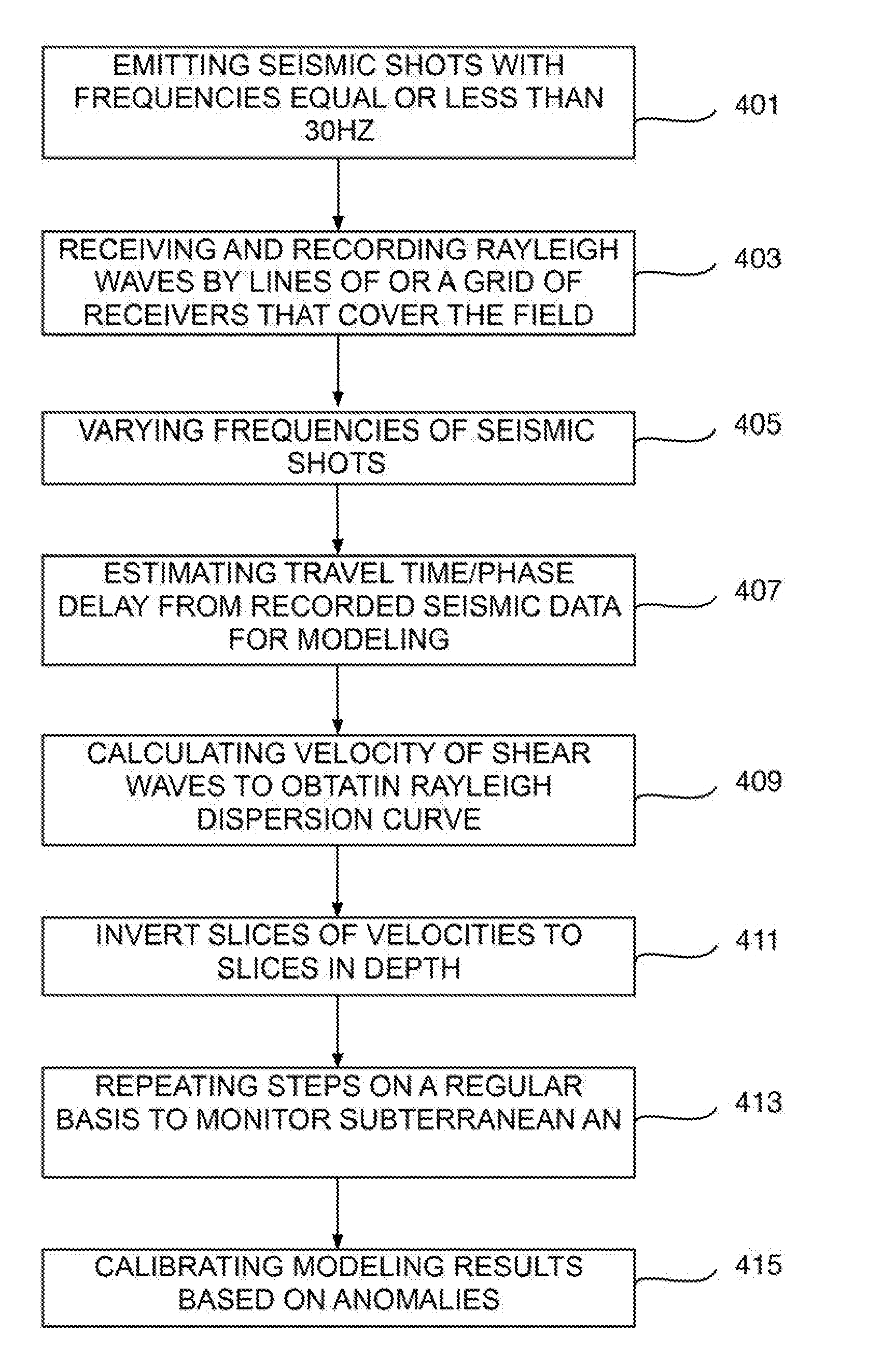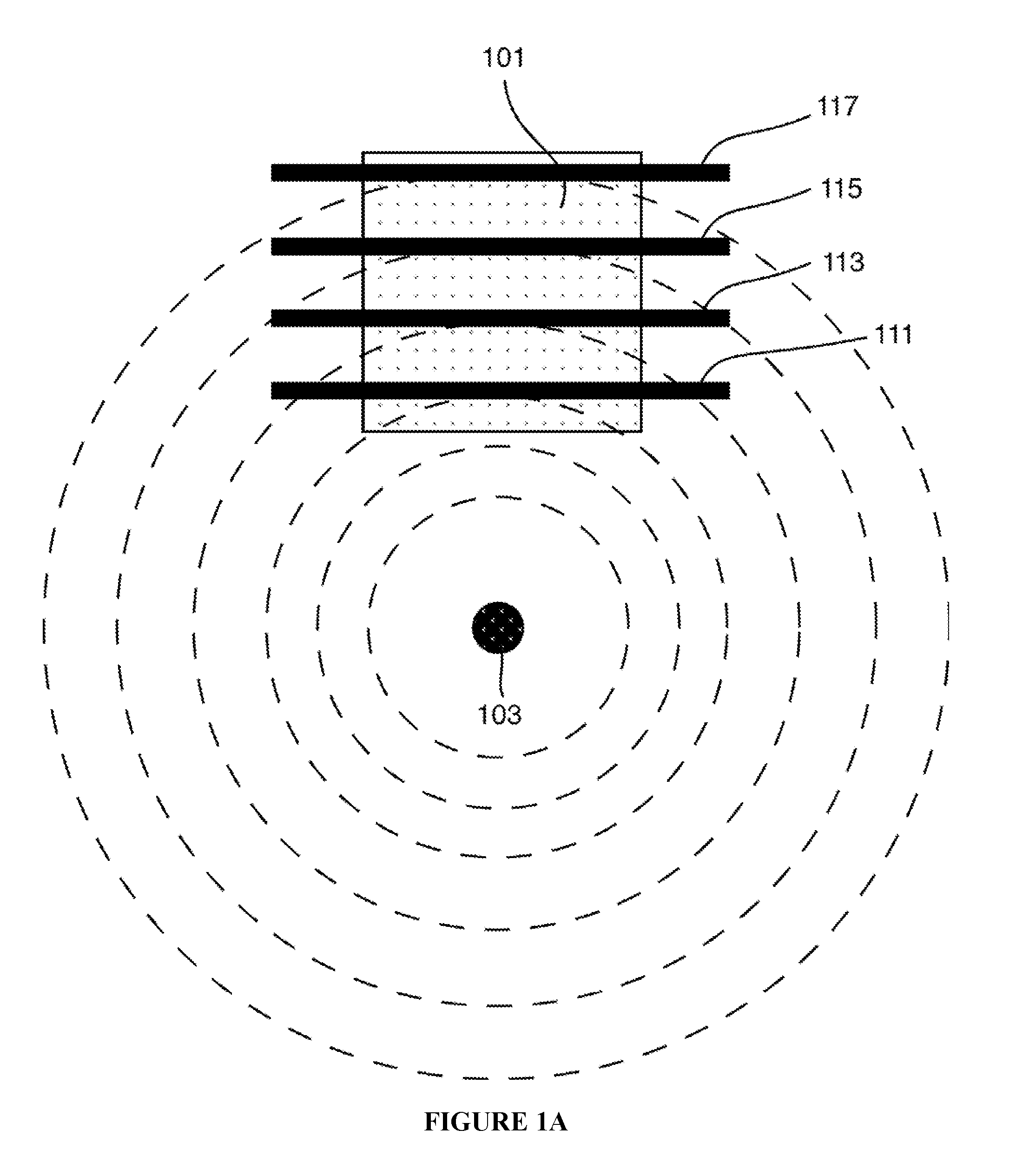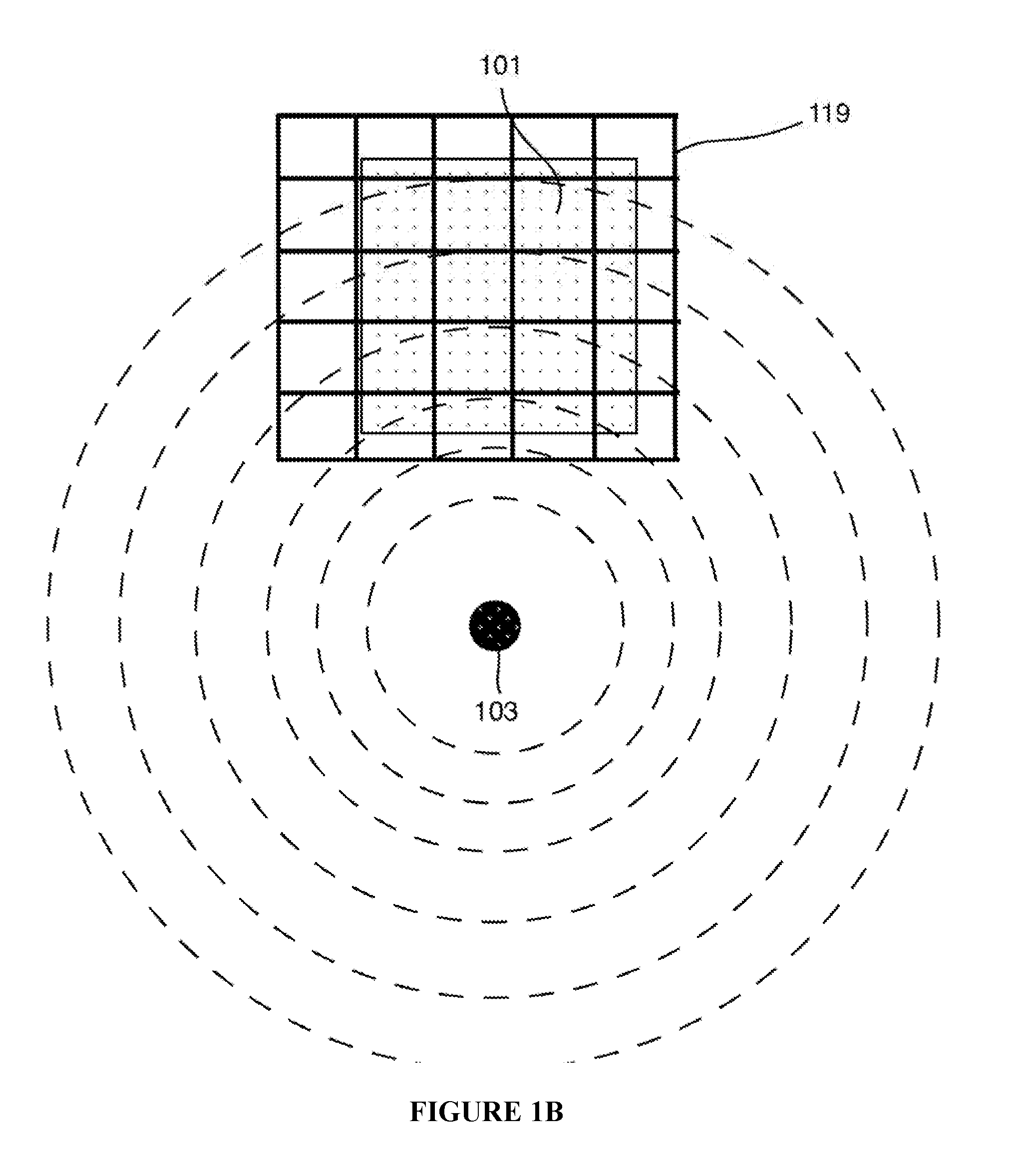Surface wave tomography using sparse data acquisition
a technology of surface wave tomography and sparse data, applied in the field of system and method for monitoring subterranean formation, can solve the problems of high data acquisition cost, limited depth sensitivity, and expensive data acquisition of classic seismic approaches for monitoring near surface regions
- Summary
- Abstract
- Description
- Claims
- Application Information
AI Technical Summary
Benefits of technology
Problems solved by technology
Method used
Image
Examples
example 1
[0020]FIG. 1A illustrates an embodiment of the present invention. As shown, production wellpad 101 is under production. Typically, there will be about a dozen injection and production wells on a given wellpad. Seismic source 103 is placed away from the wellpad, whereas first, second, third and fourth lines of receivers 111, 113, 115 and 117, respectively, are placed in parallel directly over the wellpad. The first line of receiver 111 is closest to the seismic source 103, the second line 113 is second closest to the seismic source 103, and so on. An alternative embodiment is illustrated in FIG. 1B, where receiver grid 119 serves a similar function as the lines of receivers 111, 113, 115, 117 in FIG. 1A. The receiver grid 119 covers the entire wellpad. As depicted as dashed circles in FIGS. 1A-1B, the Rayleigh waves are surface waves that propagate like ripples. The seismic source 103 can create shots for a given central frequency. Once generated, seismic waves will propagate until t...
PUM
 Login to View More
Login to View More Abstract
Description
Claims
Application Information
 Login to View More
Login to View More - R&D
- Intellectual Property
- Life Sciences
- Materials
- Tech Scout
- Unparalleled Data Quality
- Higher Quality Content
- 60% Fewer Hallucinations
Browse by: Latest US Patents, China's latest patents, Technical Efficacy Thesaurus, Application Domain, Technology Topic, Popular Technical Reports.
© 2025 PatSnap. All rights reserved.Legal|Privacy policy|Modern Slavery Act Transparency Statement|Sitemap|About US| Contact US: help@patsnap.com



